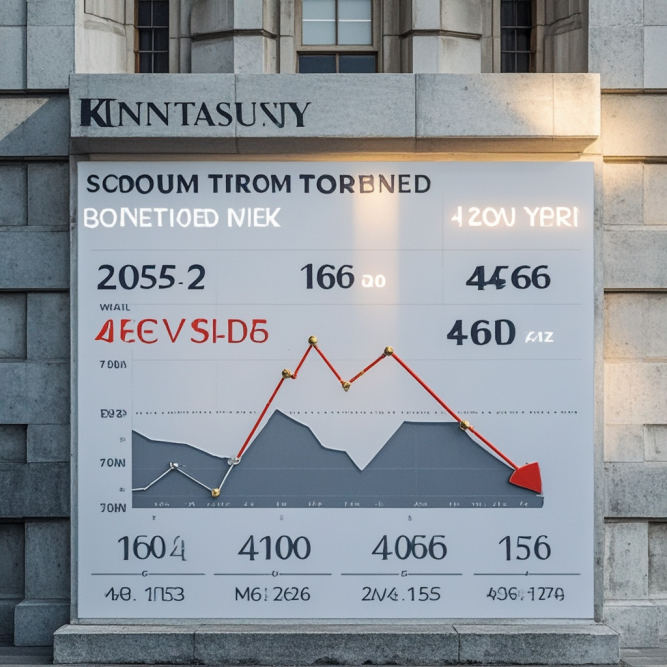Short-Term UK Government Bonds Extend Declines, Two-Year Yield Rises to 4.06%
On April 11, financial markets are closely monitoring UK government bond movements as short-term bonds continue their downward trend. The yield on two-year gilts surged by 16 basis points to 4.06%, drawing widespread market attention.
Market Overview: Persistent Declines and Rising Yields
Recently, the UK government bond market has shown a clear downward trajectory, particularly in short-term bonds. On April 11, the two-year gilt yield climbed sharply by 16 basis points to 4.06%. A rapid rise in yields typically signals falling bond prices, indicating increased selling pressure on short-term UK government bonds.
Trading activity has picked up, but sell-side forces dominate. This trend is not limited to two-year bonds—similar patterns are observed in other short-term bond segments, reflecting weakening market confidence in UK short-term debt.
Underlying Causes: Multiple Interwoven Factors
Economic Uncertainty
The UK economy faces a bumpy recovery amid Brexit and global economic volatility. Recent economic data, including manufacturing PMI and services sector figures, have disappointed, raising concerns about the UK’s growth prospects. Investors fear sluggish future growth may erode bond returns, prompting sell-offs that drive yields higher.
Inflationary Pressures
Despite the Bank of England’s efforts to curb inflation, recent data shows persistently high price levels. Sustained inflation reduces the appeal of fixed-income bonds, as investors anticipate rising prices will diminish real returns. This has led to capital outflows from bonds into inflation-hedging assets like gold or commodities, further depressing bond prices.
Monetary Policy Expectations
Market speculation about the Bank of England’s next moves is intensifying. Some investors expect further monetary tightening—such as rate hikes or reduced asset purchases—to address inflation and economic challenges. These expectations diminish the relative attractiveness of short-term bonds, triggering preemptive portfolio adjustments and yield spikes.
Market Impact: Ripple Effects Across the System
Implications for Investors
For holders of short-term UK bonds, price declines mean portfolio markdowns. While rising yields may offer higher future returns, current income stability is disrupted. Investors may need to reassess allocations, potentially diversifying into equities or high-quality corporate bonds to mitigate risks.
Impact on the UK Financial System
As a cornerstone of the financial system, bond market volatility can trigger chain reactions. Higher short-term yields may raise borrowing costs for businesses and the government. For the UK Treasury, elevated debt servicing expenses could strain public finances, while companies may face tighter financing conditions, dampening investment and growth.
Global Spillover Effects
The UK’s status as a major economy means its bond market swings carry international repercussions. Movements could reverberate in other sovereign debt markets, particularly in Europe, and alter global capital flows as investors seek safer havens, reshaping cross-border investment patterns.
In summary, the April 11 slide in short-term UK bonds and yield surge stem from multiple drivers. Their evolution will not only shape domestic financial stability but also exert far-reaching influence on global markets, warranting close monitoring by all stakeholders.
